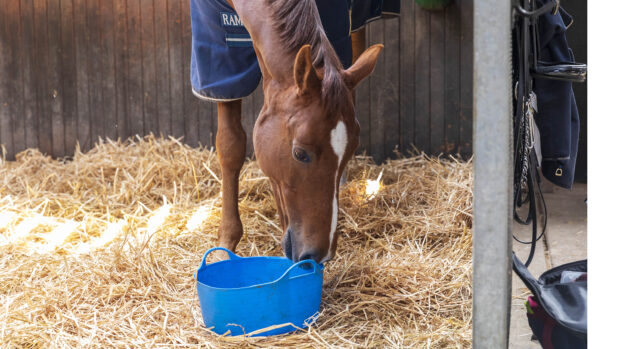More understanding is needed from owners when using training aids for lungeing and riding, research has suggested.
The study “Evaluating Horse Owner Expertise and Professional Use of Auxiliary Reins during Horse Riding”, by researchers at the Free University of Berlin, was published in Animals last month and investigated how much knowledge owners have regarding auxiliary reins, including side-reins, draw-reins and running martingales – and whether they are used appropriately.
Of 823 people who completed the study questionnaire, 199 used auxiliary reins “regularly”. Reasons for using training aids included problems with the horse “leaning”, external advice, or that owners had been used to using them since training started.
Of respondents, 296 used training aids mainly for lungeing, and most only attached auxiliary reins after the warm-up phase, but half of participants did not adjust them during the entire session. Three quarters could identify what the horse’s correct head position should look like, but 50% adjusted the reins too tightly and did not adjust them, even if the horse showed signs of breathing issues.
The researchers concluded that there is lack of information, and a need for clarification, among owners regarding the pros and cons of using training aids and the effects of the different reins used.
“The majority of participants felt they had sufficient knowledge about the use of auxiliary reins attributed to their experience as a rider. More serious violations were only recognisable in a small section of the respondents. However, against the background of animal welfare, these are to be taken very seriously in some cases and stopped immediately,” said the researchers.
“The goal must always be to use auxiliary reins for a short time in a problem-oriented way in the training and correction of horses in order to make these reins superfluous, and this knowledge must become an integral part of riding training.
“Further examinations should focus on the distinction of a running martingale versus the other auxiliary aids, as many riders would use the former as standard tack throughout a horse’s career.”
UKCC level three coach and Olympic eventer Sharon Hunt told H&H often riders are heavily influenced by whoever is training them at the time, and she believes there is a “time and a place” for training aids, if they are used in the correct way.
“Riders need to be trained correctly so they are only using training aids when necessary. This is really about the horse’s welfare – there is no point using something if the horse is unhappy, it’s not going to work,” she said. “You need to have a flexible approach because every horse is different and some take longer to understand things.”
Sharon added she was surprised that in the study, riders said they used training aids when the horse was leaning.
“A horse that leans is likely to lean more [with auxiliary reins on],” she said. “I think some riders need to look a bit deeper into the training when it comes to gadgets and think, ‘Why am I using this?’ They need to have an understanding of what they are doing, what they shouldn’t do, and the feeling they are trying to get from the horse.”
The British Horse Society’s (BHS) director of education Alex Copeland said the safe and correct use of tack is “critically important” to horse health and wellbeing.
“The BHS always recommends equestrians seek professional advice regarding the use of any piece of equipment or tack that they are not absolutely confident of using in the correct way,” he said.
In 2018, H&H reported on research that found riders think they know more about equestrian topics than they do, and “demonstrated an over-estimation of their equine knowledge regardless of qualification level”. The research was the first to provide evidence of the Dunning-Kruger effect, by which lower performers tend to be unaware of their lack of knowledge or ability, within equestrians.
You might also be interested in:

Riders think they know more than they do, research shows
‘This over-confidence can have serious consequences on the welfare of horses, and could affect the mental health of riders’

Body image a significant issue for riders, study finds

Subscribe to Horse & Hound magazine today – and enjoy unlimited website access all year round
Horse & Hound magazine, out every Thursday, is packed with all the latest news and reports, as well as interviews, specials, nostalgia, vet and training advice. Find how you can enjoy the magazine delivered to your door every week, plus options to upgrade your subscription to access our online service that brings you breaking news and reports as well as other benefits.



